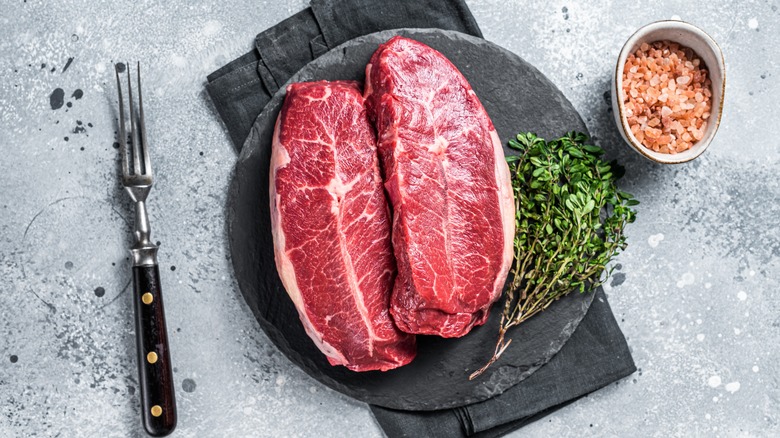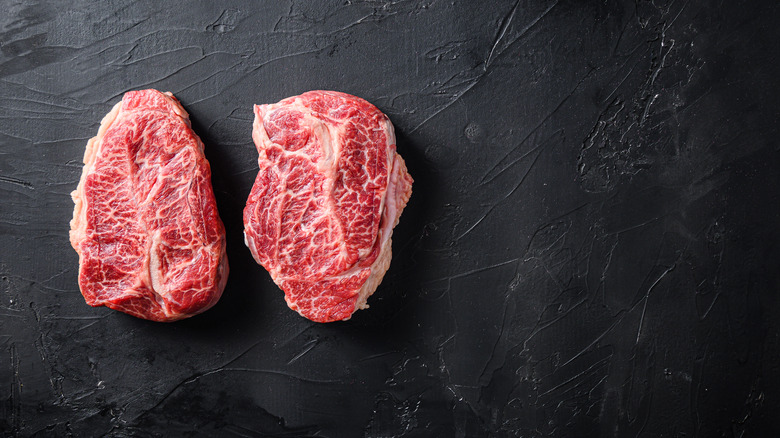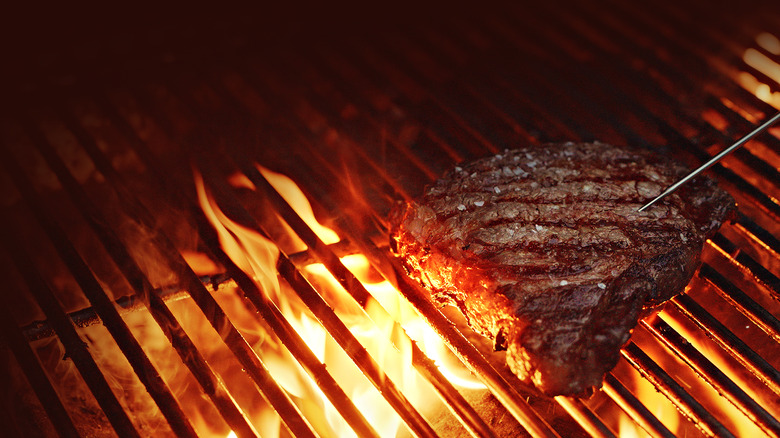Oyster Blade Steak: The Ultra Tender Cut That Won't Break Your Budget
Whether you're preparing for grilling season or simply trying to plan a satisfying dinner, steak is a no-brainer, but choosing the correct cut for your budget and recipe can be a little bit more complex. After all, not every night calls for an expensive cut of ribeye or the much-beloved filet mignon. Luckily, there are some very tasty, lesser-known cuts of steak that will make the perfect addition to your dinner lineup. One such cut, which has flown under the radar for far too long, is the oyster blade steak.
Oyster blade steaks are cut from the shoulders of the steer, right above the brisket. It is named for the muscle that cuts across the middle of the steak, which is said to be in the shape of an oyster. The cut is long, and features a line of gristly tissue that spans the center of the steak. Oyster blade steak typically has a good amount of marbling, which makes it both tender and flavorful. The cut can easily be broken down into smaller cuts, removing the gristle at its center to suit your preference.
No matter how you cut it, oyster blade steak is a great option for many recipes, from a classic stir fry to a simple grill cook.
Getting to know your oyster blade steak
The oyster blade steak has been a well-kept secret among butchers and beef enthusiasts alike for many years. The cut sits in the chuck region of the steer and is therefore less expensive than the ribeye section, which sits behind the shoulder blades. Just because it's cheaper, doesn't mean that the oyster blade cut isn't delicious or versatile. In fact, the oyster blade steak's distinctly beefy taste can be leveraged to suit a wide variety of recipes spanning different ethnic cuisines.
Oyster blade steak has developed quite the following in the world of barbecue thanks to its center cut of connective tissue. This tougher section makes the cut perfect for low and slow cooking. It also makes braising a fantastic option for cooking your oyster blade steaks, though there are of course a few braising pointers you'll want to keep in mind if this is the cooking method you choose.
If you lack the patience or proclivity to barbecue, you can always break down your oyster blade steak into smaller cuts for grilling. This will require you to remove fat on the exterior as well as the line of gristle at the center. These preparatory steps will give you perfectly marbled cuts of steak better fit for shorter cook times over high heat.
Tips for purchasing an oyster blade steak
When purchasing your cut of oyster blade steak, there are a few important facts to keep in mind. Oyster blade steaks are often erroneously referred to as "flat iron steaks." The misconception is understandable. The flat iron steak is a part of the top of the oyster blade cut, and is named after its shape, which supposedly looks an awful lot like an old flat-iron (think of a rounded shape with pointed ends). So if you're looking for a whole oyster blade cut, make sure to not call it a flat iron steak, or you'll only get half of what you're looking for.
Oyster blade steaks are also often mistaken for oyster steaks, which are another cut entirely. Unlike oyster blade steaks, oyster steaks come from the backside of the steer and are much smaller, usually only weighing a few ounces. Also called spider steaks in Australia, oyster steaks feature heavy marbling throughout. Like oyster blade steaks, they are generally inexpensive, though the two are far from interchangeable.


